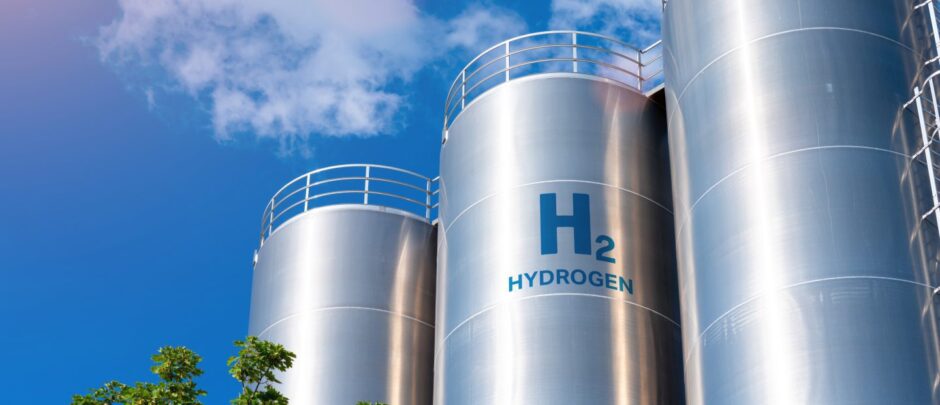
I spend a lot of time reading the international energy media. I also discuss a lot with people in the policy and engineering world overseas about what’s going on or what’s not going on, particularly in terms of technology development and manufacturing.
Stringing it all together and looking at the general trend over the past year, one thing I am absolutely sure of is that Scotland, and indeed the UK, is going backwards in comparison not just with the big European, North American, and Asian countries but also with our peers.
By peers, I mean other small countries such as Denmark and Norway but including some that are even smaller such as Estonia.
These are the ones I would expect Scotland to be competing with, but it’s simply not when it comes to mainstream technologies such as wind, solar and hydrogen. Hence, the “big yawn”.
We do compete in two particular sectors, and they are heat storage with Sunamp Ltd. and in tidal energy technology with companies such as Nova Innovation.
Some would argue that we’re also competing in large heat pump systems because we have Star Renewable Energy in Glasgow. But, none of these technologies are what could be described as “mass market” in the same way wind turbines or solar are.
I should also point out that there is a small company called GM Flow Measurement Services in Aberdeenshire that’s developed a hydrogen flow meter. This technology has a role to play right across the entire spectrum of hydrogen applications.
However, it’s not just the big mass market sectors that we’re falling behind on, because we’re not involved in the emerging sectors either.
For example, the development of hydrogen-fuelled drive trains for aircraft is surging ahead. Whether fuel-cell or turbine-powered, this technology is making good progress with several demonstration flights having already taken place.
The number of hydrogen fuel cell-powered vessels being developed has increased. Scotland, a supposed maritime nation has – to use a popular phrase – no skin in this game.
On the automotive front, a small Scottish company has developed a battery-powered off-road Land Rover-style vehicle, but it’s a niche market again.
I’ve lost count of the hydrogen projects in Europe, but with Siemens announcing a new electrolyser giga factory and numerous hydrogen production hubs to be built in various EU countries and the Dutch building a 1,200km long €1,5B hydrogen pipeline network as part of an EU wide plan to reduce their reliance on natural gas, it’s obvious we’ve fallen behind.
On top of this, the US Department of Energy (DOE) has announced US$7bn to launch seven Regional Clean Hydrogen Hubs. Big money, big ambitions.
In the meantime, the 1,500 residents of the island town of Stad aan ‘t Haringvliet in the Netherlands have voted overwhelmingly to swap their natural gas boilers for ones fuelled by green hydrogen produced locally. Personally, I don’t understand why the Scottish islands don’t follow suit. It would provide both security and resilience and is effectively inflation-proof.
In Germany, the company I mentioned earlier this year which is selling a self-contained solar-powered hydrogen production and storage unit that only needs a water supply is making progress. They’ve developed a new 15 kW system with 1,500 kWh of hydrogen storage capacity and raised €22 million. Well done them!
The European Commission is about to inaugurate its much anticipated Hydrogen Bank in order to support the increase of renewable hydrogen.
It will make €800 million available from European funds to help industry and incentivise private investment. It’s already rolling out hydrogen stations every 125 miles or so across its main roads.
AMTE Power, which is developing next-generation sodium-ion batteries, wants to build a factory in Dundee but is having difficulty raising the money and nearly went bust.
Now, it might be the subject of what seems a cheap majority buyout for £2.5m by a private equity company.
Northvolt A/S in Sweden, which already manufactures a similar battery, has had no such problems. It’s already raised over $1bn.
We have one university spinout developing a new form of electrolyser. It’s also having difficulty raising funding but remains optimistic. We’ll see.
So, I’m struggling to find signs of genuine progress in the indigenous supply chain. The Scottish Government is talking with the Germans about the possibility of exporting hydrogen from Scotland to Europe. Given we produce none of the technology needed to develop such a capability we must assume it will all be imported, probably from Germany.
But hey, those developing the Energy Transition Zone in Aberdeen are building us a “green hydrogen test and demonstration facility” with the aim of making Aberdeen a “centre of excellence for hydrogen”.
You’ve got to admire their pluck because without actually having a hydrogen technology manufacturing industry, I’m more than a little lost on what exactly they’re going to test and demonstrate.
Ah well – A very happy Christmas and a prosperous New Year to everyone.
Recommended for you
